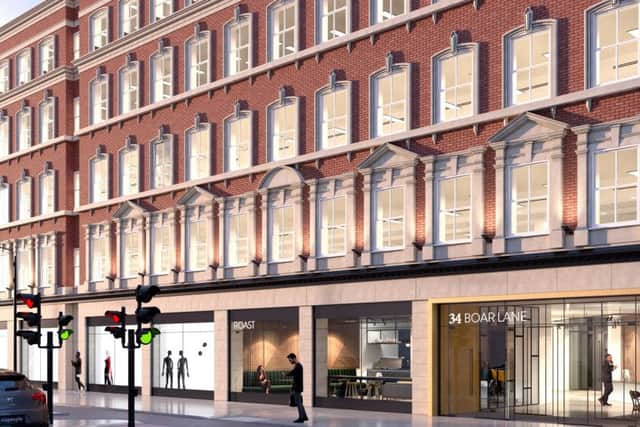Showcase for new £9.5m Leeds city centre building


Kinrise, which purchased 34 Boar Lane for £9.58m, partnered with local people in the arts, media and dance industry to visually present the building ahead of its conversion into offices, restaurants and shops.
Formerly known as CGU House, the building is located opposite Leeds railway station and Trinity shopping centre and was acquired in March of last year.
Advertisement
Hide AdAdvertisement
Hide AdThe promotional film is to show potential residents the space before and after refurbishment and is designed to give the message that the new building will be home to creative industries, start-ups and entrepreneurs.
Sam Lawson Johnston, co-founder of Kinrise, said: “We wanted to place 34 Boar Lane on the map in a non-traditional way, while also supporting local creatives who bring so much vibrancy and life to the city.


“We are passionate about transforming buildings into creative spaces and we can’t wait to fill the building with local creatives, start-ups and entrepreneurs, providing collaborative studio space in the heart of the city centre.”
To illustrate the project, Kinrise partnered with Baile Bayei to produce and direct the project.
Advertisement
Hide AdAdvertisement
Hide AdMr Bayei is the brains behind Sable Radio, an independent radio station broadcast from Leeds.
He called on his network of creatives to bring together the full production team; dancers Betty Ward and Max Cookward. Ms Ward choreographed the sequences and Mr Cookward, who was recently named by the BBC as a finalist Young Dancer of the Year, particip- ated.


Students from Leeds University composed music for the film while another assisted with the photography.
Kinrise said it had produced the film to show it is committed to reaching out to the broader community, partnering with local suppliers, arts and cultural groups and other interested parties to invigorate cities.
Advertisement
Hide AdAdvertisement
Hide AdLast year, Kinrise collaborated with East Street Arts and hosted their programme of events, exhibitions and workshops at 34 Boar Lane throughout Leeds International Festival and Leeds Indie Food Festival.
The collaboration saw over 6,000 people pass through the doors of 34 Boar Lane for the highly regarded Light Night Leeds, where five special neon artworks were on display for the festival.
Once completed 34 Boar Lane will have its concrete ceilings exposed, with glass to be introduced to allow for more natural light, as developers strive to create a sense of space throughout the building.
On its upper floors, windows have been optimised, ceilings have been raised and garden roof terraces have been introduced in a bid to create “an overall impression of lightness and modernity throughout”.
Advertisement
Hide AdAdvertisement
Hide AdPlanning permission has been granted to transform 34 Boar Lane and Eamon Fox, partner and head of office at Knight Frank Leeds, who is marketing the building has vowed to create “a diverse community of like-minded people shaping a place together”.
The team developing 34 Boar Lane boasts a portfolio which includes five historic buildings that make up The Albert Estate and nearby Canada House in Manchester.
The name Boar Lane has been a part of Leeds’ history since at least 1575 when it was known as Bore Layne.
Although it is now in the heart of the city it previously served to mark a significant border. The lane marked the West Bar, one of the town’s six medieval boundaries. A blue plaque commemorates this fact today.
Advertisement
Hide AdAdvertisement
Hide AdBy the 1620s the street would become known as a fashionable place to live.
Much of the architecture today dates back to Victorian times and the street links two of Leeds’s best known structures, the Corn Exchange and the Majestyk building.
